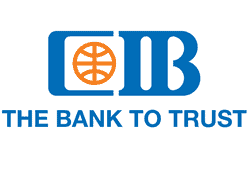Africa offers a huge opportunity for positive climate change action and sustainability if done sensibly and collectively. The continent has experienced significant losses and damages attributable to climate change, including drought, biodiversity loss, lower food production, weaker economic growth, and loss of lives. These impacts will exacerbate if global warming is above target but limiting global warming to 1.5°C or below would significantly reduce damages to African economies, agriculture, health, and ecosystems. The African population is heavily exposed to climate impacted sectors with over one-half of the workforce employed in agriculture.

The challenge is large, particularly in terms of financing. The Africa Development Bank (ADB) says that given the scale of resources needed to meet Africa’s Nationally Determined Contribution targets at around $130bn a year until 2030, more policy actions are required to close Africa’s climate finance gap.
Africa is the least climate-resilient region globally, with significant vulnerability to climate change and low readiness for adaptation to climatic shocks. ADB confirms the region has some of the lowest per capita climate finance inflows in the world. The bank is committed to addressing the continent’s climate vulnerabilities and transition towards net-zero by 2050 but considers that the transition should not compromise the need for universal access to energy services and meeting sustainable development goals.
The Intergovernmental Panel on Climate Change (IPCC), the UN’s body for assessing the science related to climate change, states the vulnerability in Africa is socially, culturally and geographically differentiated among climatic regions, countries and local communities, with climate change affecting the health, livelihoods and food security of different groups to various extents. The IPCC highlight the devasting impacts experienced by climate change and the need for adaptation and resilience for developing economies.
There has been a lack of investable sustainability projects in Africa to date. This is due to several reasons. African governments have had a mixed record in supporting projects. Infrastructure is limited which creates another hurdle and for many African countries there are no nationally determined sustainability projects. Amongst things which are needed is an African taxonomy, says Egypt’s Commercial International Bank (CIB) Chief Sustainability Officer Dr Dalia Abdel Kader. Dr Kader says ‘Africa requires a taxonomy related to the European taxonomy in order to have a global language. A structured, systematic approach providing contractual understanding would address the gap in investable projects in Africa.’ Frameworks and policies are essential for financial institutions to participate in and conduct sustainability finance and meet goals.
Not only connected to governmental operandi, weak infrastructure for Africa includes limited climate modeling capacity, insufficient internet, data constraints and poor data sharing, and at times ineffective observational networks. This in turn can limit the potential for public private partnerships as well as reducing funding and financing. Significantly raising public and private finance flows, increasing direct access to multilateral funds, strengthening project pipeline development, and shifting more finance to actual implementation would benefit adaptation in Africa according to market participants and the IPCC. Concessional finance is also needed for adaptation in low-income settings and there is benefit in aligning sovereign debt relief with climate goals. Finance could be increased by redirecting debt-servicing payments to climate resilience.
There is limited evidence for economic growth alone reducing climate damages, according to the IPCC, but under scenarios of inclusive and sustainable development, fewer people in Africa will be pushed into extreme poverty by climate change and negative impacts to health and livelihoods can be reduced. Also, African countries are inadequately insured against climate risk, but innovative index-based insurance schemes can help transfer risk and aid recovery. Despite their potential, uptake of climate insurance products remains constrained by lack of affordability and awareness.
Access to adequate financial resources is crucial for climate change adaptation. The amounts of finance being mobilized internationally to support adaptation in African countries are considerably less than adaptation cost estimates, and finance has tended to target mitigation more than adaptation.
According to market participants, although analysts face challenges regarding climate change impacts and data limitations when estimating costs and benefits for adaptation measures, adaptation generally is cost effective. The Global Commission on Adaptation found benefit–cost ratios ranging from 2:1 to 10:1. A review of cost–benefit analyses for 19 adaptation-focused projects in Africa financed by the Green Climate Fund (GCF) shows similar benefit–cost ratios. When using low discount rates, as some do for climate projects, the benefit–cost ratio is even higher. The benefits of adaptation measures for infrastructure and others with clear market impacts are often easier to estimate than for policy interventions.
Direct-access projects from the Adaptation Fund tend to be more community focused. Institutions in Africa often struggle to be accredited for direct access because of the complicated and bureaucratic processes of accreditation, which requires, for example, strong institutional and fiduciary standards to be in place. ESG standards for institutions are important. ESG policies are crucial to attract sustainability investment and assist banks and companies to consider environmental and social issues. Infrastructure financing contributes to sustainability development which in turn is linked to ESG standards. African countries and other developing economies want a fair transition, particularly rega rding the energy sector and the focus towards renewables in terms of funding support and speed without impacting economic growth.
Capacity to develop fundable projects in Africa is often inadequate. While African countries can submit proposals to climate funds, they have a low approval rate compared to other regions, possibly due to the quality of proposals. Even following accreditation, some countries experience institutional and financial challenges in implementing activities to support specific adaptation measures.
Adaptation finance has often not been targeted towards more vulnerable countries. Most agree that reasons for this include fast-growing middle income countries offering larger gains in emission reductions, so finance has favored mitigation in these markets, and as more climate finance uses debt instruments, mitigation projects are preferred as returns are perceived to be more certain.
Many adaptation interventions for most vulnerable countries and communities provide no adequate financial return on investments and thus relying on funding with concessional public finance. But public funds are insufficient to meet growing adaptation needs. Public apparatus can help leverage private sector finance for adaptation by reducing regulatory, cost and market barriers through blended finance approaches, public–private partnerships, or innovative financial instruments.
The European Investment Bank (EIB) says that around 70% of banks in sub-Saharan Africa view green finance as an attractive lending opportunity and that over one-half of African banks consider climate change when making strategic decisions. However, only around 10% have tailored their products to serve green finance. The EIB is collaborating with ADB to increase a shared pipeline of investable projects addressing climate change and supporting environmental sustainability. The EIB comments that African banks are not doing more green lending due to reasons including a lack of knowledge lending to some sectors, shortage of tools to assess climate risk, and the uncertainty how to adapt their products to climate action lending. Banks’ loan books in Africa are exposed to climate change and building adaptation and resilience will aid economies and communities. Green finance is increasing in Africa, but growth is needed to meet climate change and sustainability targets.
Click the link below to access COP 27 supplement in Global Finance digital edition:
To view the full COP 27 Supplement please click here https://pubs.royle.com/view/global-finance-media-inc/global-finance/november-2022.
Sponsored by:




